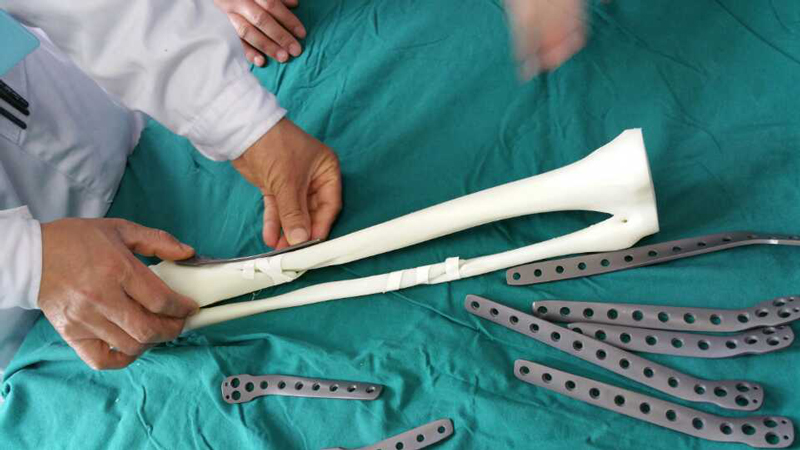
Authors: Gordon Slater| Tandose Sambo
“The secret of health for both mind and body is not to mourn for the past, not to worry about the future, or not to anticipate troubles, but to live in the present moment wisely and earnestly.” – Buddhist saying
Human longevity and quality of life will be enhanced by technologies such as 3-D printing. The applications of 3D printing includes custom healthcare that involves personalized medical equipment and the creation of anatomic models[2]. Orthopaedic surgery as a specialty often has patients with cases that require structural reinforcement. This reinforcement is facilitated via implants that are often created via the advent of 3-D printing technology.
From a patient treatment perspective, the utilization of 3-D printing has enhanced the planning process in medical procedures. These applications include:
- Pre-operative Planning: With the fusion of medical images and 3D printers, 3D replicas of the patient’s organs can be created. This enables the orthopaedic surgeon and medical residents to have a visual of what they can expect, when they are actually in the operating theatre. With a model of the surgical site, the surgical plan can be created.
- Manufacturing of patient-specific instrumentation: If implants are to be created for patients, it will be possible for these implants to be custom fitted to the patient. The part can be created from the medical images of the patient.
- Manufacturing of patient-specific instrumentation: In some instances there will be some instrumentation such as screws, plates, arthroplasty components and scaffolds that have to be built for a patient. With 3D printing, the exact specifications of the tools can be designed online, and then printed and sterilized prior to the surgery.
Economies of scale will enhance 3D printing technology, and enable patients to be treated in a fast and economical manner. As a relatively new technology, 3D printing is providing new opportunities in the medical realm. In the medical literature, the increase in publications is becoming more noticeable. With advantages of 3D printing such as better implant properties, reduction in operation time, and improved patient recovery, the advantages are proving themselves in the medical industry.
Advances in material science are also enabling the development of materials that are medical grade and designed with the mechanical properties that will fulfil their intended purpose in the patient. As the applications expand, the future of orthopaedic care can anticipate 3D printed parts for various parts of the body including the hips, knees, spine and skull. When integrated with fields such as tissue engineering and regenerative medicine, it is possible for the tissues and the skeleton to be restored where required. For utilization of 3D printing technologies to an application, licenses by the FDA and CE have to be issued.
Applications of 3-D printing in orthopaedics
The technologies utilized in 3D printing are in the category of layered manufacturing techniques. As an additive technology, when fused with imaging techniques such as CT scans and MRI’s, the 2D image generated by scanning patients, can then be translated into the 3D design with the printer. Bone prototypes can be generated, that can be utilized either in training sessions, or in surgical preparation and patient customised care. If there are areas of the body that will need to be adjusted, for example in the case of injuries or defects, then predictions can be made by imaging software that will enable the appropriate replacement parts to be generated and implanted.
The ability to manufacture metallic/ceramic personalized prostheses is one of the most highly sought after advantages of 3D printing technologies. As materials, costs and material availability improve, the applications will increase with time. From a technical perspective the ability to generate free-form shapes is the advantage of 3-D printing. With layer by layer printing, natural anatomic shapes can be manufactured. With free-form design it is possible to create porous yet mechanically strong orthopaedic parts that can support biologic agents such as stem cells and growth factors. Implant design becomes more seamless, and the stability of the unit will be enhanced by the mechanical properties of the material.
In summary, the applications of 3D are in the initial stages of their lifecycle. As personalized medicine becomes more prevalent, it will be possible for medical care delivery to be optimized to suit the patient. In the orthopaedic realm, treatment options will be enhanced, with faster healing times.
References:
[1] 3D Printing in Orthopedic Surgery: https://blog.peekmed.com/3d-printing-in-orthopedics/#:~:text=One%20of%20the%20main%20advantages,integrated%20in%20the%20implant%20design.
[2] Bone and Joint: https://online.boneandjoint.org.uk/doi/full/10.1302/2058-5241.5.190024


